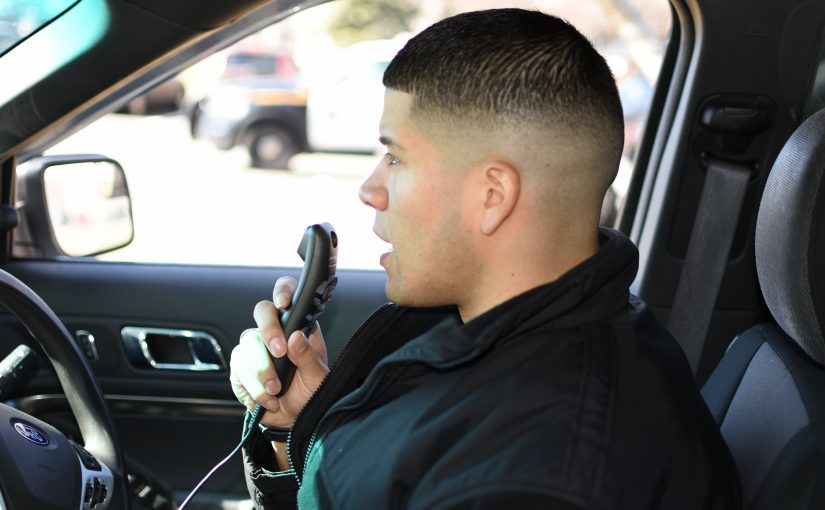Reducing Paperwork Can Help Departments Improve Efficiency, Productivity, and Safety
The high volume of paperwork in police work is not new, but more agencies are beginning to focus their IT investments towards alleviating this administrative burden. The city of Los Angeles, California, is one example, with a recent initiative to use technology to help officers spend more time in the field and less time behind their desks.1
While incident reporting is vital to police work and helps move criminal proceedings forward, officers spend a significant portion of their workdays on documentation. According to a recent survey, officers say they spend three hours or more per shift on paperwork. These heavy documentation demands can create ripple effects across agencies, from missed deadlines and inaccurate or incomplete reports to officer burnout—or worse, impact officer safety with heads-down reporting in the patrol vehicle.2
Documentation demands take officers away from mission-critical tasks. For industries like law enforcement with workforces that are beholden to meeting constant deadlines, heavy reporting demands can have a snowball effect, especially when it comes to community visibility. Balancing documentation demands, while also trying to free-up officers’ time to focus on higher-value tasks can become a constant battle for police chiefs and their command staff.
Heavy reporting demands divert officers’ focus away from caring for people within their communities; instead, they spend hours filing incident reports.
Manual, disconnected reporting processes can impact the immediacy and quality of reports. Meeting reporting deadlines is crucial for police departments. If they do not meet these deadlines, criminal proceedings can be stalled, or worse, abandoned. It’s not just the mission-critical information or high-profile cases that can impact the outcome of proceedings. Everyday moments, like traffic stops, burden officers with a hefty reporting load.
Officers who are responding to multiple incidents per day need to rely on memory or decipher handwritten notes from hours before. Both can lead to inaccuracy and lack of specificity within the reports they file. The mind-numbing nature of reporting can also lead to input and factual errors. Combine these two factors, and the result is faulty police reports that won’t stand up in court proceedings.
In-car documentation can impact officer safety. One of the most vulnerable times for an officer is when he or she is heads-down in the patrol car, for instance, in situations where they are stationary and working on incident reports. Moving their eyes away from their line-of-sight, even for a moment, can make them more prone to accidents or ambushes.
While officers are taught many tactical moves when it comes to safety, many of these tactics do not address manual reporting, which keeps them heads-down in the patrol vehicle. Combine this with the poor ergonomics of having to twist and turn in the car seat to enter data into their laptops, and in-car documentation becomes less than ideal.
Alleviating the Paperwork Burden with Speech Recognition Technology
As the focus continues to shift toward onboarding better tools and techniques in policing, one of the central areas many departments need to tackle is the amount of documentation in police work required to get the job done.
Speech recognition technology, powered by artificial intelligence (AI), provides a faster and more accurate way to safely and more conveniently improve daily reporting and documentation demands, speed data entry into the records management system, and conduct everyday tasks, including license plate lookups—all by voice.
Instead of typing, officers can dictate their reports in real-time. A report that takes one hour to complete manually is done within minutes. Often, the technology can be tailored to include police-specific terms and customized to the agency.
Agencies can also improve in-car documentation and safety while officers are stationary in their patrol vehicles by integrating speech recognition into their CAD or RMS systems. Officers can enter and look up data by voice, thus staying “heads up” and more situationally aware. It’s also a better ergonomic experience, reducing the need for officers to twist and turn in the car seat to access a keyboard or touchscreen.
Speech recognition technology can help drive better outcomes for departments and officers―from saving agencies hundreds of hours in time, helping mitigate issues associated with paperwork, and reducing officer burnout to improving community visibility and officer safety.
 Mark Geremia is vice president and general manager for Dragon Professional and Consumer and oversees the product and marketing strategy for Nuance’s Dragon speech recognition and documentation workflow portfolio. Mark has held various leadership roles within the Dragon business over the last decade, and with his team continues to expand Dragon’s reach across enterprise, legal, and law enforcement markets. Prior to joining Nuance in 2005, Mark held key marketing management positions at both large and small technology companies. |
Notes:
1 Jacquelyn Bengfort, “Los Angeles Wants Tech to Liberate Police Officers from Administration,” StateTech, June 19, 2019.
2 Nuance, Role of Technology in Law Enforcement Paperwork (Dragon Law Enforcement, 2019).



